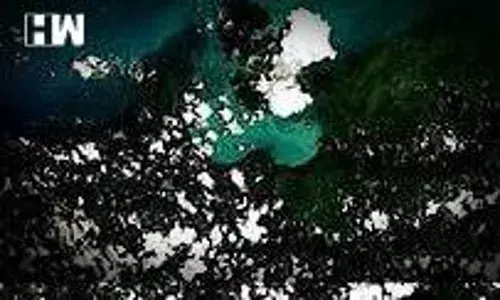Tonga’s capital, Nuku’alofa, is covered in ash and dust following the underwater volcanic eruption at the weekend, but the situation is calm there and first clean-up efforts are underway, UN humanitarians said on Monday.
Further afield in the Pacific archipelago, an update from aid coordinating office OCHA, indicated that there has been significant damage to infrastructure around the main island of Tongatapu, where several resorts have been destroyed or badly affected, in western coastal areas.
There are no confirmed fatalities so far, but two people are still missing, and assessments are still pending, particularly from the outer islands.
Shockwave
According to reports, Saturday’s eruption was heard as far away as Alaska, while the tsunami that emanated from the blast flooded the Japanese and US coastlines, also killing two people in Peru.
So far in Tonga, no official contact has been established with two small low-lying islands Mango and Fonoi, although surveillance flights by New Zealand and Australia have revealed substantial damage along western beaches.
Local telephone lines have been repaired, OCHA said, but restoring international phone connections and internet service, remain complicated after the eruption reportedly severed a key communications cable lying on the seabed.
In addition to receiving help from neighbouring New Zealand and Australia, the Tongan authorities deployed the national maritime force to the Ha’apai Group of islands on Sunday.
Next steps
In this challenging situation, the UN and its partners in the Pacific are urgently planning next steps, including those UN agencies already based in Tonga such as the UN Population Fund (UNFPA), UN Children’s Fund (UNICEF) the Food and Agriculture Organization (FAO), the International Organization for Migration (IOM) and the World Health Organization (WHO).
To support the Tongan government, the WFP is exploring how to bring in relief supplies and more staff, and it has also received a request to restore communication lines in Tonga by deploying its Emergency Telecommunications Cluster.
The ETC initiative brings together 29 organizations from the humanitarian, private and government sectors who work to provide shared communications services in emergencies.
Teams from the rapid-response unit can be mobilized within 48 hours of an emergency to work with local partners and reconnect communities, responding to up to 10 crisis situations a year.
Typically, ETC teams help to restore mobile networks and internet connectivity to affected populations, while also setting up security systems or getting radio stations back on air, in recognition of the vital role played by communications in an emergency.
UNICEF at the ready
UNICEF Pacific said in a statement released on Monday that it was ready to work together with the Government and its partners to ensure urgent life-saving support is provided to families and children.
“We are on standby to provide humanitarian support to the Government of Tonga and its people affected by the volcanic eruption and tsunami,” said UNICEF Pacific Representative, Jonathan Veitch. “UNICEF will work with the government, civil society organizations, and other development partners to ensure immediate response efforts on the ground, which includes providing clean water, and emergency health supplies for children and families affected.”
Small islands vulnerable
The President of the UN General Assembly, Abdulla Shahid, is closely monitoring developments in the region, according to his Spokesperson, Paulina Kubiak.
“The President is relieved that there have been so far, no confirmed reports of deaths or major injuries”, she said. Mr. Shahid hails from the island archipelago of the Maldives, and he said the eruption in Tonga, once again demonstrates the vulnerability of small island developing States (SIDS) to natural disasters, such as tsunamis.
“The usual response options, when it comes to SIDS are limited. There is limited higher ground. The ground water is easily contaminated and almost all infrastructure is located near the shoreline. What we need is efforts to enhance resilience”, Ms. Kubiak continued, “as outlined in the Sendai Framework on Disaster Risk Reduction, and further specified in the 2030 Agenda.”
The disaster is yet another instance where international solidarity is needed, says the General Assembly president, once the Tongan Government identifies the support it requires.
As an independent media platform, we do not take advertisements from governments and corporate houses. It is you, our readers, who have supported us on our journey to do honest and unbiased journalism. Please contribute, so that we can continue to do the same in future.

